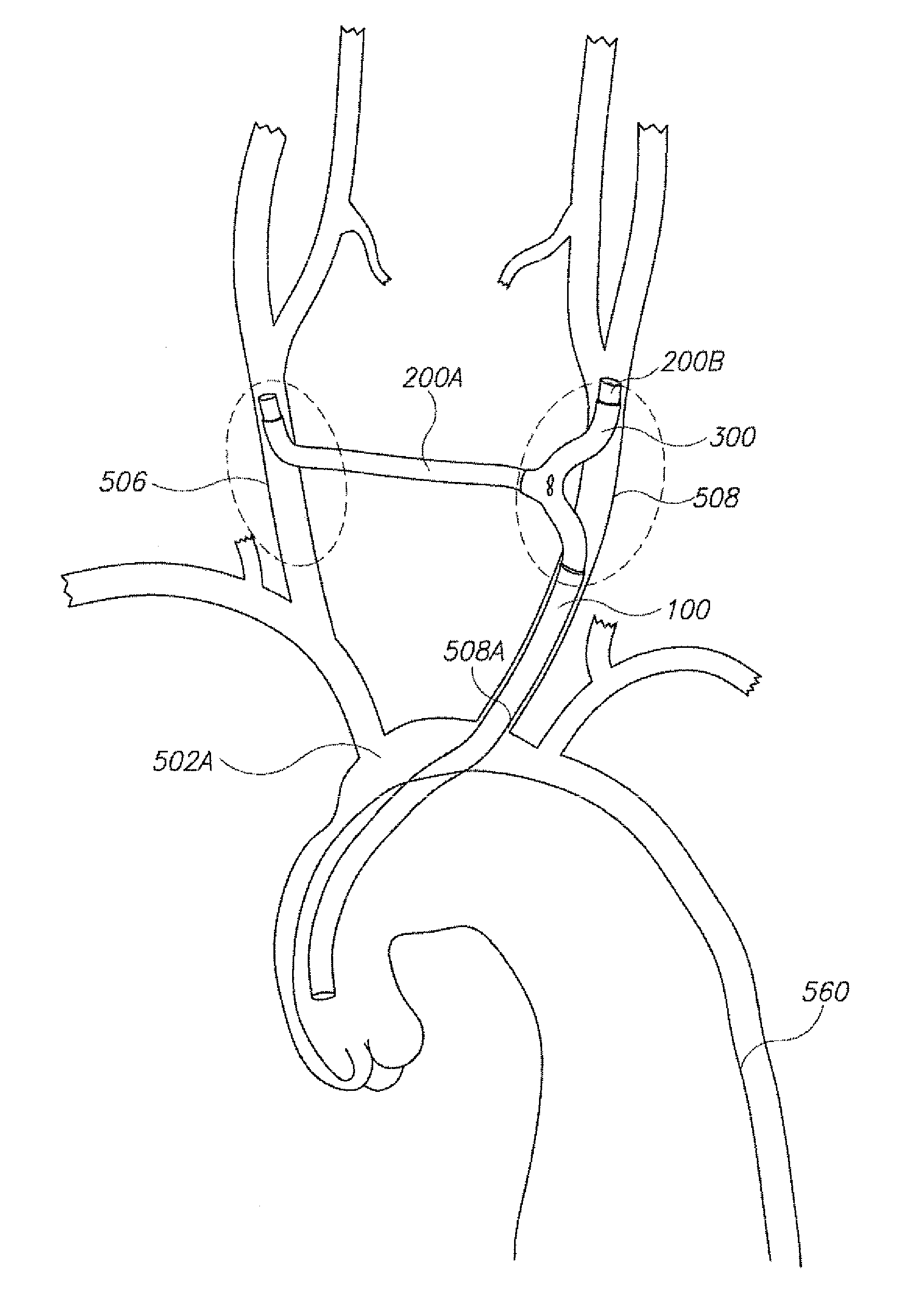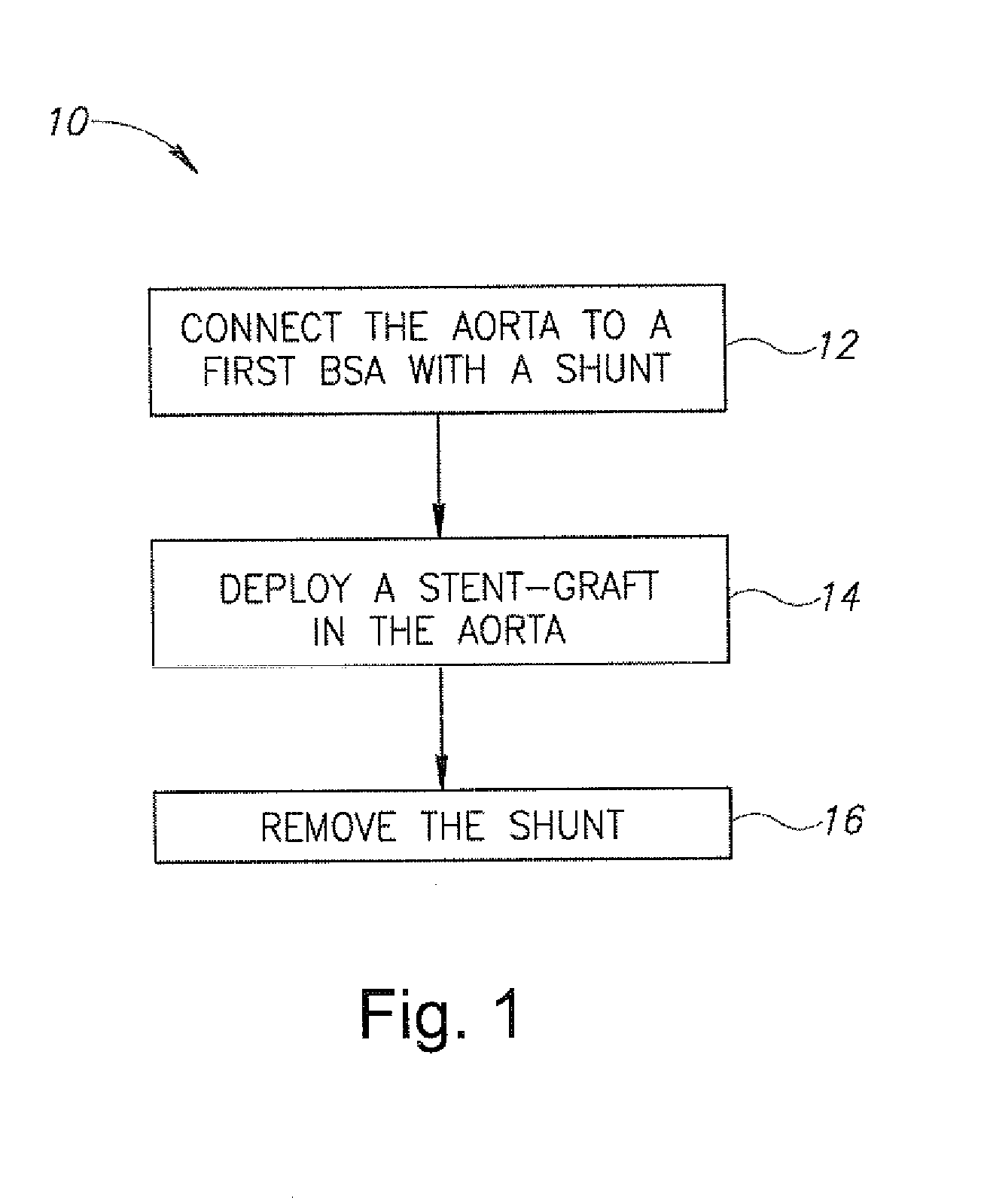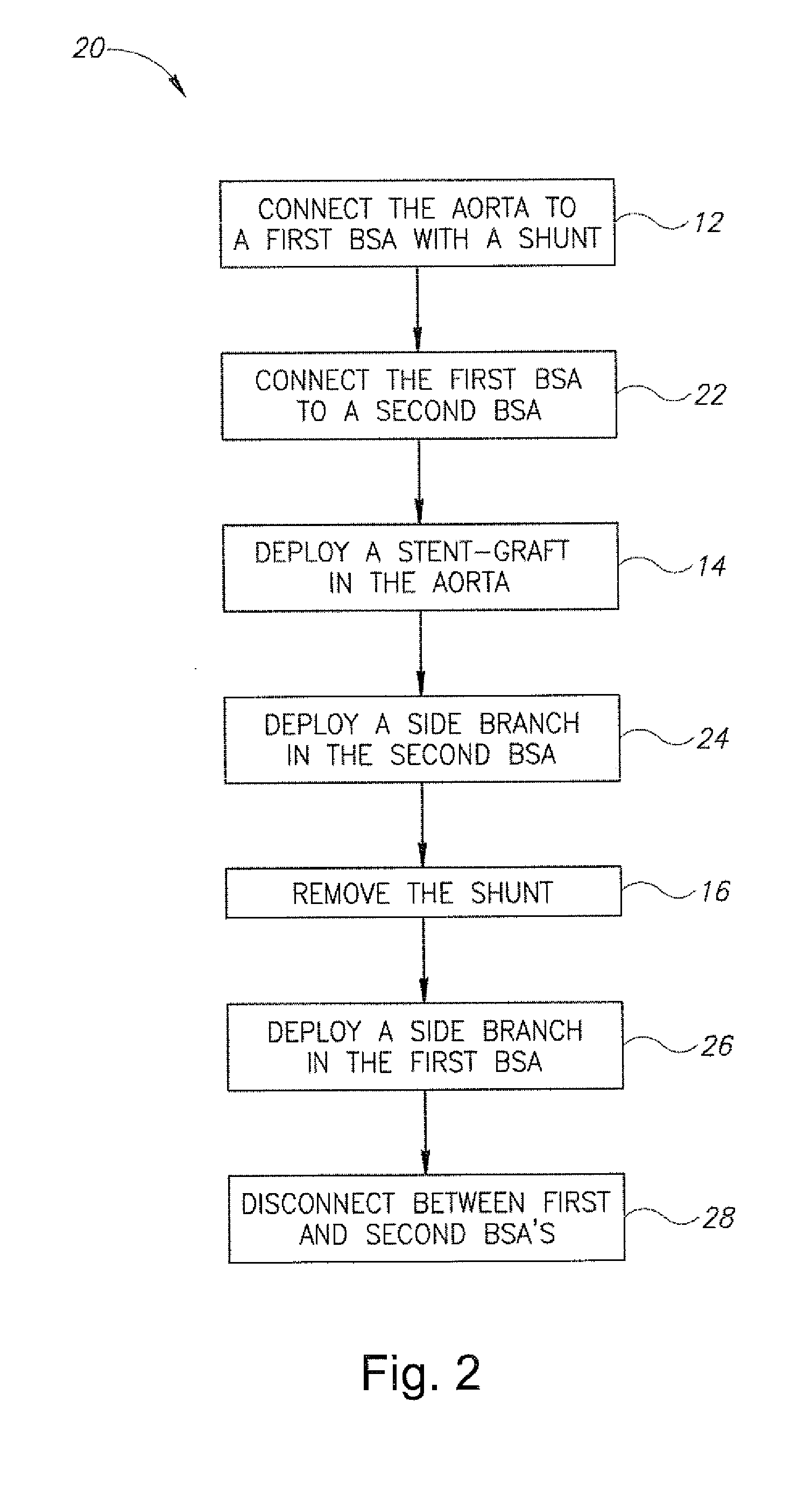Branch stent graft for aortic aneurysm repair
a stent and aneurysm technology, applied in the field of stent graft design and deployment, can solve the problems of severe complications and death, inability to repair endovascular damage with standard tubular stent grafts, and significant mortality exceeding 15-20%, so as to increase the effect of increasing the reliability of the seal
- Summary
- Abstract
- Description
- Claims
- Application Information
AI Technical Summary
Benefits of technology
Problems solved by technology
Method used
Image
Examples
Embodiment Construction
[0164]In the following, first described are exemplary methods for deploying a stent-graft in the aorta according to some embodiments of the invention, then a deployment procedure according to an exemplary embodiment of the invention is described in detail, and then some devices useful in the exemplary deployment procedure are described.
Deployment Methods
[0165]FIG. 1 is a flowchart of actions to be taken in accordance with a method (10) according to an exemplary embodiment of the present invention. The actions shown are described in FIGS. 3-12.
[0166]The method (10) comprises inserting (12) a removable shunt along a portion of the BSA into the aorta; deploying (14) a stent-graft in the aorta; and removing (16) the shunt.
[0167]Inserting (12) a shunt connecting the aorta and the first BSA is for allowing blood flow to the brain during deployment of the stent-graft, through the first BSA, which otherwise would be occluded by the stent-graft, at least until after the stent-graft is fenest...
PUM
 Login to View More
Login to View More Abstract
Description
Claims
Application Information
 Login to View More
Login to View More - R&D
- Intellectual Property
- Life Sciences
- Materials
- Tech Scout
- Unparalleled Data Quality
- Higher Quality Content
- 60% Fewer Hallucinations
Browse by: Latest US Patents, China's latest patents, Technical Efficacy Thesaurus, Application Domain, Technology Topic, Popular Technical Reports.
© 2025 PatSnap. All rights reserved.Legal|Privacy policy|Modern Slavery Act Transparency Statement|Sitemap|About US| Contact US: help@patsnap.com



